Griffith
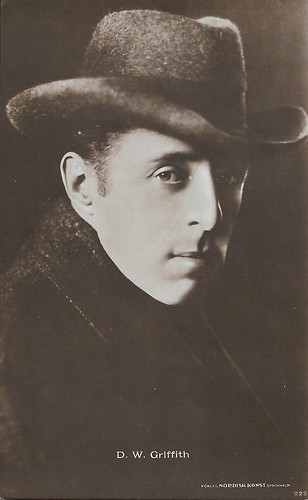
Swedish postcard by Förlag Nordisk Konst, Stockholm, no. 922. A rare portrait of the famous American film director D.W. Griffith.

American postcard. Kraus Manufacturing Company, New York 1913. Biograph Co. Henry B. Walthall (1878-1936) was a prolific actor at D.W. Griffith's American Biograph and played in countless films there. The culmination of the Griffith-Walthall connection was Walthall's role as Colonel Ben Cameron in The Birth of a Nation (1915).

British postcard by Cinema Art, London. The cast of D.W. Griffith's film Way Down East (1920). From left to right, the actors George Neville, Edgar Nelson, Burr McIntosh, Kate Bruce, Richard Barthelmess, Lillian Gish, Lowell Sherman, Vivia Ogden, Creighton Hale, Mary Hay and Porter Strong.
Walt in Wonderland: Ub Iwerks & Disney

French postcard by Imp. Georges Lang, Paris, offered by Chocolats Tobler. Image: Walt Disney. Pete or Peg-Leg Pete is a villainous cat created by Walt Disney and Ub Iwerks. He is the arch-nemesis of Mickey Mouse, normally characterised as a cigar-smoking thug with a ruthless and tyrannical personality. Some of Pete’s most notable traits include his Herculean strength and thunderous cackle. Pete’s most frequent scheme involves kidnapping Minnie Mouse for lecherous purposes. Pete first appeared in Alice Solves the Puzzle (1925). He was a bear-like animal that frequently antagonised Alice and her friend, Julius. The Alice Comedies were produced three years before the first appearance of Mickey, which makes Pete the oldest recurring Disney character and the first villain to be conceived by the studio.
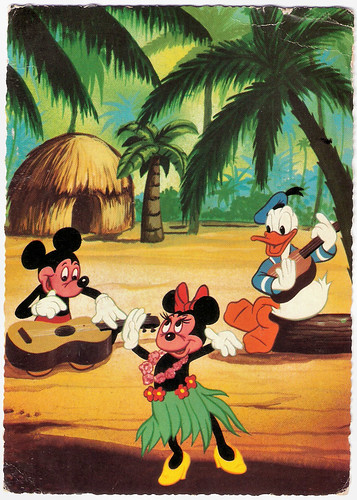
French postcard. Illustration: Walt Disney Productions. Sent by mail in 1967. Mickey Mouse is a funny animal cartoon character and the mascot of The Walt Disney Company. He was created by Walt Disney and Ub Iwerks at the Walt Disney Studios in 1928. An anthropomorphic mouse who typically wears red shorts, large yellow shoes, and white gloves, Mickey is one of the world's most recognisable characters. Mickey was created as a replacement for a prior Disney character, Oswald the Lucky Rabbit. He debuted publicly in the short film Steamboat Willie (1928), one of the first sound cartoons. He went on to appear in over 130 films.
Mickey Mouse's uncle
Russell Merritt was born in 1941 and grew up in New Jersey and Connecticut. At a young age, he discovered the medium of film, which opened new avenues for him to art, literature, music etc. In high school, he watched Birth of a Nation (1915) and then discovered the "father of film". His PhD dissertation at Harvard was on the 485 short- to full-length films D.W. Griffith made between 1908 and 1913. He researched his work at such length that he became an expert on Griffith. Eventually, he would be also an adviser on the Emmy-awarded TV series Griffith, Father of Film, while he was also one of the prominent contributors to the long-running Griffth Project at the Giornate del Cinema Muto.
His interest in Griffith led to a more general fascination with silent film and with various film styles and genres — from animation to national cinema (French, Italian, Japanese, and German), to the films of the 1950s. His first academic article was on Alain Resnais'L'Année dernière à Marienbad/Last Year at Marienbad (1961), and his favourite film was Jean Renoir's La règle du jeu/Rules of the Game (1939).
Russell also favoured research on early Disney animation resulting in his co-authorship of 'Walt in Wonderland: The Silent Films of Walt Disney' (2000) and 'Walt Disney's Silly Symphonies: A Companion to the Walt Disney Cartoon Series' (2006). Here he was also much intrigued by Disney's sources and appropriations, from the early animation of Pat Sullivan's Felix the Cat to Chaplin and Keaton. Indeed, he was fascinated when the Dutch Filmmuseum (now Eye) found and preserved a whole range of combined animation & live-action silent shorts by Disney with the character Alice during the 1990s.
For decades Russell enthused his students with his film history classes, first at the University of Wisconsin-Madison and from 1986 at the University of California-Berkeley. He also produced and directed the Great Nickelodeon Show, a recreation of a turn-of-the-century nickelodeon program which has played at the Telluride Film Festival, Le Giornate del Cinema Muto, the Los Angeles Film Festival, the TCM Film Festival and other venues.
In addition to the mentioned publications and many more articles on Griffith, Russell Merritt also published on e.g. Sherlock Holmes on film, precinema, Sergei Eisenstein, music for silent film, and the end of Technicolor. At the site of Le Giornate del Cinema Muto is written: "There will be no Russell Merritt at the next edition of Le Giornate del Cinema Muto and it will be the first time since 1986. At that time he had come to Pordenone thanks to his fraternal friend David Shepard of the Directors Guild of America, to whom the Le Giornate paid tribute that year on the occasion of its 50th anniversary. Since then Pordenone had become his second home. A regular and familiar presence, for everyone Mickey Mouse's uncle for his studies and books on the early Walt Disney, for the Days an incomparable collaborator and friend of the festival, which he had helped to make known in the United States." We will miss him.

French postcard by Editions Superluxe, Paris, no. 13. Image: Walt Disney - Micky Mouse S.A.. Publicity still for Snow White and the Seven Dwarfs (William Cottrell, David Hand, Wilfred Jackson, Larry Morey, Perce Pearce, Ben Sharpsteen, 1937). Caption: To please Snow White, the Dwarves wash vigorously - except Grumpy who is noticeably obstinate.

Franco-British postcard by Milton, Woolstone Bros. of London. Design by Pat Sullivan. Inspiration: Felix the cat. Caption: "Felix, remember you've got to keep steady on your pins/Félix, rappelle-toi que tu as besoin d'être solide sur tes pattes."
Silly Symphonies

French postcard by Imp. Georges Lang, Paris, offered by Chocolats Tobler. Image: Walt Disney. The Big Bad Wolf is the main antagonist of the Silly Symphonies short Three Little Pigs (Burt Gillett, 1933) and its sequels. As his name suggests, he is a ruthless, conniving wolf who constantly plots to capture and eat the Three Little Pigs.

French postcard by Imp. Georges Lang, Paris, offered by Chocolats Tobler. Image: Walt Disney. Fifer Pig and Fiddler Pig are two of the three little pigs of the classic Silly Symphonies short Three Little Pigs (Burt Gillett, 1933) and its three follow-up shorts, The Big Bad Wolf (Burt Gillett, 1934), Three Little Wolves (Burt Gillett, David Hand, 1936), and The Practical Pig (Dick Rickard, 1939). The three pigs are constantly targeted by the Big Bad Wolf, who wants to eat them for dinner.
Sherlock Holmes - on stage and in the cinema
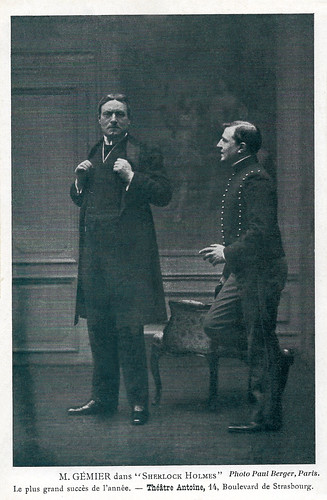
French postcard by Imprimerie Darjeanne. Photo: Paul Berger, Paris. Firmin Gémier in the play 'Sherlock Holmes' at the Théâtre Antoine, Paris. Caption: The biggest success of the year. The play 'Sherlock Holmes' (1899) by William Gillette and based on the famous stories by Arthur Conan Doyle, was first performed in a French version by Pierre Decourcelle, at the Théâtre Antoine in Paris in 1907.

French postcard by Editions Cinémagazine, no. 126. John Barrymore in Sherlock Holmes (Albert Parker, 1922).

East German postcard by VEB Progress Filmvertrieb, Berlin, no. 3012, 1967 Photo: Senta Berger and Ivan Desny in Sherlock Holmes und das Halsband des Todes/Sherlock Holmes and the Deadly Necklace (Terence Fisher, 1962).
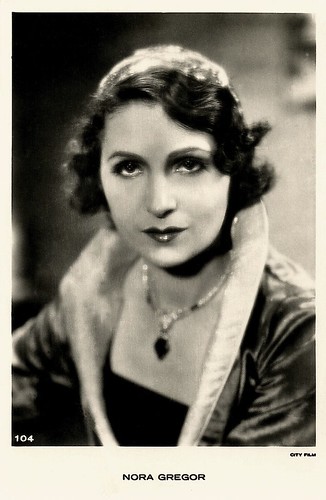
Dutch postcard by City Film, no. 104. Austrian Nora Gregor (1901-1949) was an operetta diva, stage and film actress. Her most famous screen role was as Christine in Jean Renoir's classic film La Règle du Jeu (1938).
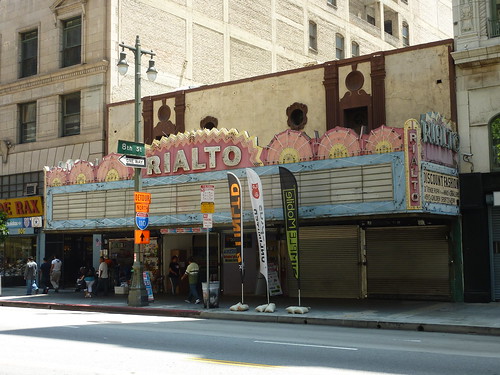
Rialto Theater, 812 South Broadway, Los Angeles, CA, United States. This former cinema was built in 1917 as Quinn's Rialto, a nickelodeon. Architect was Oliver Perry Dennis and exhibitor was J.M. Quinn. The Rialto was purchased by Sid Grauman in 1919 and it quickly became part of his growing empire. Grauman gave it a remodel using William Woollett as the architect and for awhile it was known as Grauman's Rialto. The seating was 1,000 originally, and 840 in later years.
Technicolor & Senso
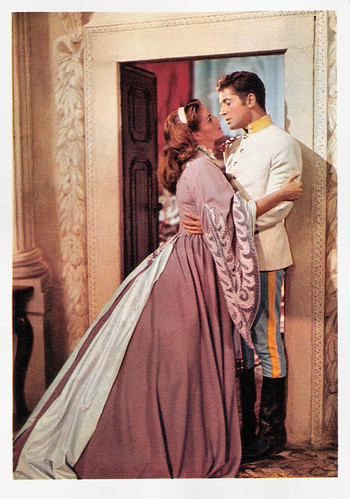
Italian postcard by Rotocalco Dagnino, Torino. Photo: Lux Film. Alida Valli and Farley Granger as countess Livia Serpieri and Lt. Franz Mahler in Luchino Visconti's historical film Senso (1954). This scene was shot at the 16th century Villa Godi-Malinverni at Lonedo, Lugo di Vicenza - Andrea Palladio's oldest villa, once called Villa Valmarana. The costumes are by Marcel Escoffier and Piero Tosi. Senso was one of the earliest colour features in Italian film production and is a masterpiece of colour cinema.
Sources: Hilary Kaiser (Berkeley Olli), Laughing Place, Le Giornate del Cinema Muto (Italian), and IMDb.
No comments:
Post a Comment